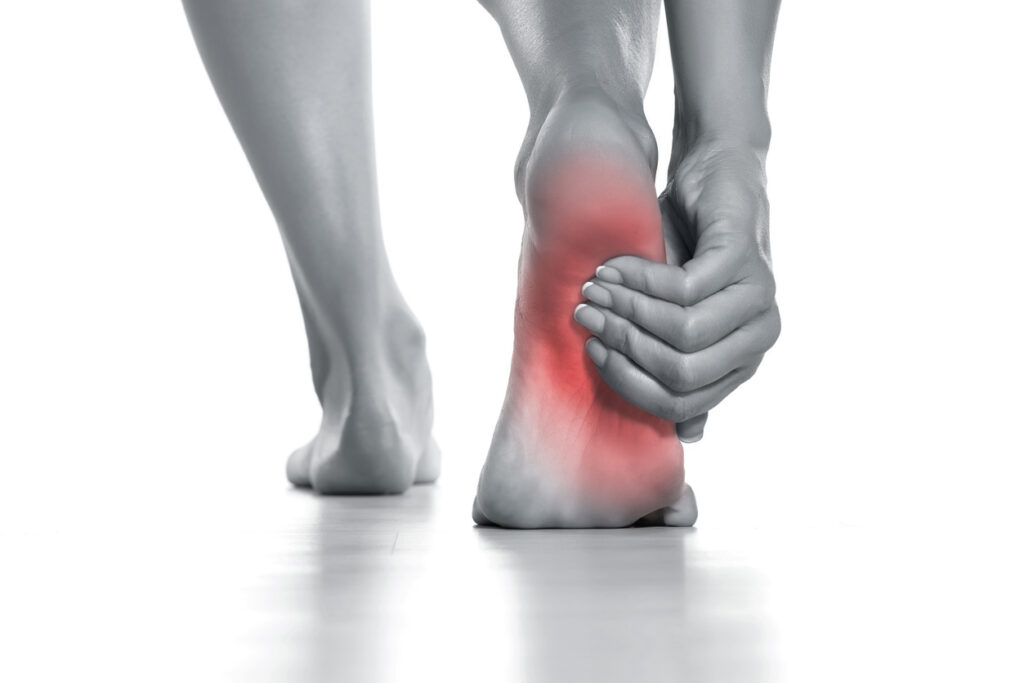When Is Plantar Fasciitis Not Plantar Fasciitis? Exploring Nerve Entrapment and the Power of Active Release Technique
Plantar fasciitis is one of the most common causes of heel and foot pain, often described as a stabbing sensation in the bottom of the foot. It’s frequently attributed to overuse or strain on the plantar fascia, the thick band of tissue connecting your heel to your toes. But what if your heel pain isn’t plantar fasciitis at all?
In some cases, symptoms resembling plantar fasciitis are actually caused by entrapment of the medial and lateral plantar nerves. These conditions mimic plantar fasciitis but require a very different treatment approach to achieve relief. Let’s dive into how nerve entrapments differ from plantar fasciitis and why Active Release Technique (ART) is a powerful tool for addressing this often-overlooked issue.
The Overlap: Plantar Fasciitis vs. Nerve Entrapment
Plantar fasciitis and nerve entrapment can produce similar symptoms, including:
- Heel pain, particularly with the first steps in the morning or after prolonged periods of rest
- Pain that worsens with activity or pressure on the sole of the foot
However, nerve entrapments have distinct characteristics that set them apart:
- Distribution of Pain: While plantar fasciitis pain is localized to the heel and the arch, nerve entrapment pain may radiate or produce tingling, numbness, or burning sensations extending into the toes.
- Aggravating Factors: Nerve entrapments are often exacerbated by positions that stretch or compress the nerves, such as prolonged standing or wearing tight footwear.
- Response to Traditional Treatments: If traditional plantar fasciitis treatments—like stretching, orthotics, or anti-inflammatory medications—don’t provide significant relief, nerve involvement should be considered. Stretching or compressing an aggravated nerve can make the pain worse!
Understanding Medial and Lateral Plantar Nerve Entrapments
The medial and lateral plantar nerves branch from the tibial nerve and travel through the foot, providing motor and sensory functions. Entrapment of these nerves can occur due to:
- Tight or overused muscles, such as the abductor hallucis or quadratus plantae
- Trauma or repetitive strain
- Scar tissue or adhesions from previous injuries
Medial Plantar Nerve Entrapment
Often referred to as “jogger’s foot,” medial plantar nerve entrapment typically affects runners or those engaging in repetitive foot movements. Symptoms may include:
- Pain along the arch
- Numbness or tingling in the first three toes
Lateral Plantar Nerve Entrapment
Entrapment of the lateral plantar nerve is less common but can cause:
- Pain on the outer side of the heel
- Weakness in the small muscles of the foot
The Role of Active Release Technique (ART)
Active Release Technique (ART) is a patented, hands-on treatment that targets soft tissue restrictions and adhesions. It’s highly effective for addressing nerve entrapments in the foot by:
- Releasing Adhesions: ART works to break up scar tissue and adhesions that may be compressing the medial or lateral plantar nerves. This restores normal nerve gliding and reduces pain.
- Restoring Muscle Balance: By addressing tight or overactive muscles like the abductor hallucis, ART helps alleviate excessive pressure on the nerves.
- Improving Circulation: The technique promotes better blood flow to the affected area, aiding in tissue repair and reducing inflammation.
A Case Study: When ART Made the Difference
Consider a patient who presented with classic plantar fasciitis symptoms but failed to respond to conventional treatments. Upon closer examination, nerve entrapment was identified as the root cause. Using ART, the practitioner targeted the abductor hallucis and surrounding tissues plus restored the normal nerve excursion. Within weeks, the patient experienced significant relief, regaining mobility and returning to their normal activities.
When to Seek Professional Help
If you’ve been diagnosed with plantar fasciitis but aren’t finding relief, consider consulting a healthcare provider trained in ART. They can perform a thorough assessment to determine whether nerve entrapment may be the underlying issue.
At Perform Health & Wellness, our experienced team also offers Chiropractic Care, Functional Medicine, and Weight Loss Support to help you recover and thrive.
Conclusion
Heel pain isn’t always what it seems. Misdiagnosed plantar fasciitis is common and can lead to prolonged discomfort and frustration. Recognizing the possibility of medial or lateral plantar nerve entrapments and seeking targeted treatments like Active Release Technique can make all the difference. With the right approach, you can step confidently back into a pain-free life.
For more information or to find out if we can help you with your heel pain, contact our office today at (949)476-1250.

